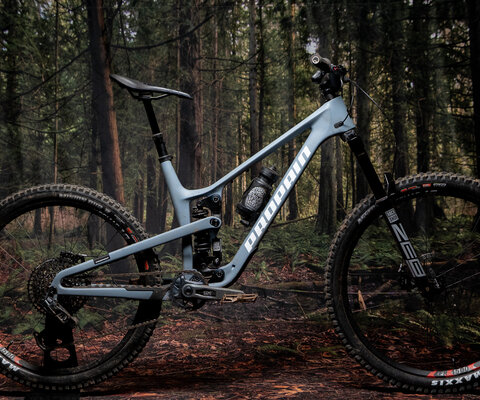
OneUp Clip Pedals A usable platform and all the colors.
Words and Photos by Cy Whitling
This spring, OneUp released its first clipless pedal, the well-named Clip pedal. In the months since its been dogged by two conversations: one about the accuracy of the name, and another about the initial stop-sell notice and immediate update that OneUp executed due to an issue with the pedals failing to release. So we’ll address those two things quickly up-front, and then get into the important part of the review.
Yes, pedants of the internet: We know you are such experienced cyclists that you remember how clipless pedals earned their name. But, hey, the SPD system has been around for 35 years now. Most riders never had to endure the indignity of toe clips. Language evolves to meet the moment. These pedals are a whole lot more “clippy” than flat pedals. When you put your foot on them, you clip in. Calling them the “Clip Pedal” makes a bunch of sense. If it makes you feel any better you can pretend that it’s a colloquial shortening of “clipless.”
Second: the stop-sale notice. Soon after these pedals hit the market, OneUp announced that some riders were having issues with their cleats hanging up in the binding as they tried to step out. OneUp immediately issued a notice to all customers to either send in their pedals for a free upgraded rear binding plate, or wait to be mailed one to install at home. OneUp was quite transparent about this process and the pedals I reviewed came with the updated plate. I haven’t had any issues with my cleats hanging up as I release.
OneUp Clip Pedal Details
- Thickness: Body 14.4 mm / Binding 26.8 mm
- Size: 80 mm x 90 mm
- Compatible with a standard SPD cleats
- Weight (one pedal with pins): 208 g
- Price: $160
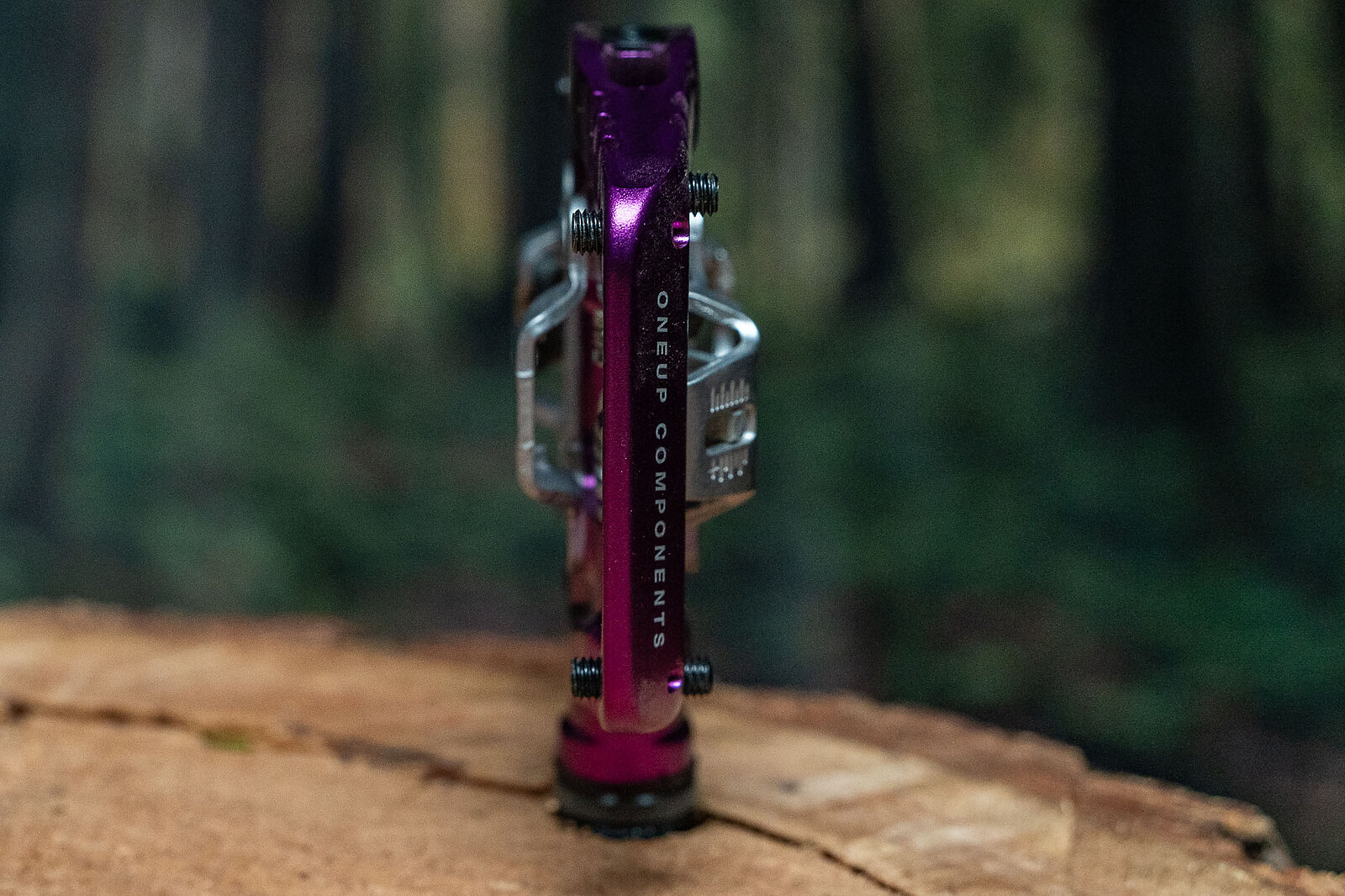
OneUp Clip Pedal Features
As is the OneUp way, the Clip pedal has a dialed and cohesive feature set. OneUp says this is the thinnest clip pedal on the market at 26.8 millimeters at the binding, with its platform also measuring a tiny bit thinner (.6 millimeters) than the XTR pedals I reviewed recently. It’s also compatible with SPD cleats, including the new multi-entry cleat I covered in that review. Each pedal has four adjustable pins on each side, and spins on a combination of an igus bushing and three bearings.
The binding mechanism has 5° of float, and a 12° release angle, and OneUp says it has a wider range of release tensions than Shimano. Specifically, the maximum tension of the Clip pedal is apparently significantly higher than that of Shimano. I’ve been running mine pretty close to the middle of their range, so I don’t have any real experience there.
Pedals ship with cleats, cleat spacers, pins, and the socket to remove the axle to clean and regrease it. And of course, they’re available in eight colors, including the purple I reviewed.
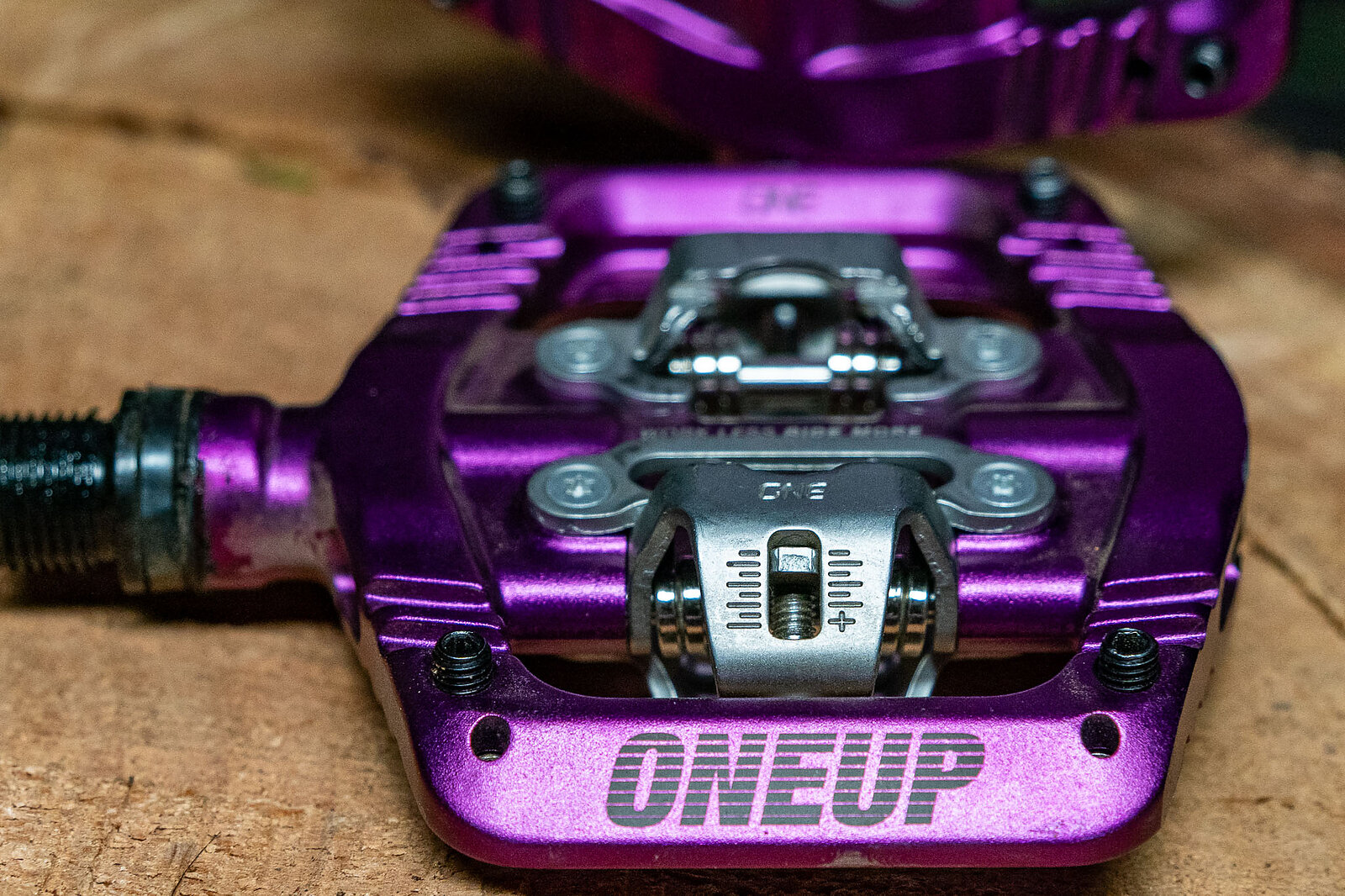
OneUp Clip Pedal Performance
As I detailed in my Shimano review, I’m on the upswing of my “return to clip pedals” arc. The short version is that I’ve struggled in the past with the vague feeling cleat float gives me, as well as with getting pedals to clip in smoothly out of the gate.
The OneUp Clip pedal does the best job of eliminating that queasy pedal float feeling that I’ve found in an SPD. I’ve been using it with Specialized’s 2FO shoes, and I’ve experimented with pin placement. I’ve settled on just running the rearmost two pins, since the front two fall on the edges of the cleat channel and don’t really contact the shoe. With those pins installed, the Clip has an even better platform and shoe interface than the new XTR trail pedals. I can still dig my shoes into the pins like I’m used to with flat pedals, and when I unweight them to unclip, they don’t hang up too much.
I’ve used these pedals with both the included OneUp cleat, and with Shimano’s new multi-entry cleat. While the Shimano cleat is noticeably easier to clip into the binding, both have a similar clip out feel. I don’t think that the release sensation is quite as smooth and clean as Shimano’s own pedals with either cleat. The release almost feels like SRAM versus Shimano shifting, with the Shimano pedals having a quieter, smoother release, while the OneUp’s have a more definitive, thunking feeling.
That said, I think this will be a fairly personal choice, with plenty of folks not even noticing the difference—I certainly didn’t after I got used to it. And for folks who want a stiffer release value than Shimano, OneUp’s stronger springs will be much appreciated. The same goes for anyone who enjoys color matching their components. OneUp lets you get colorful to your heart’s content. And their pricing slots nicely right between Shimano XT ($10 cheaper) and Shimano XTR ($100 more expensive).
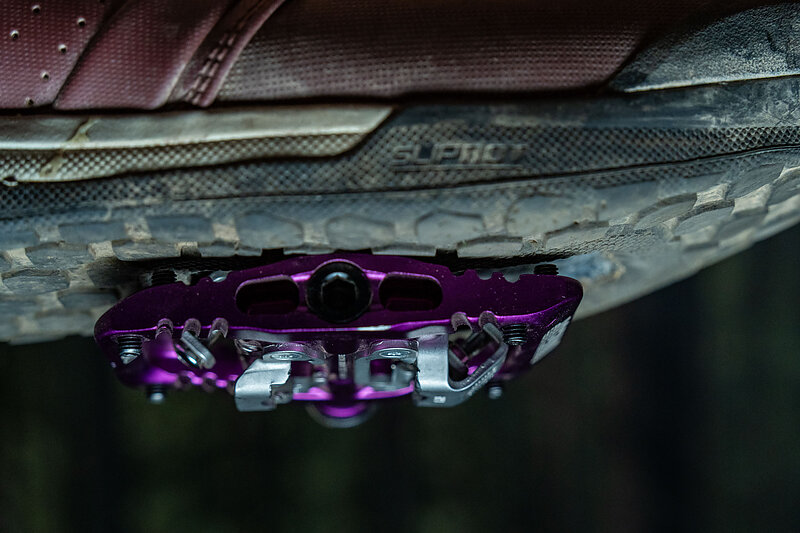
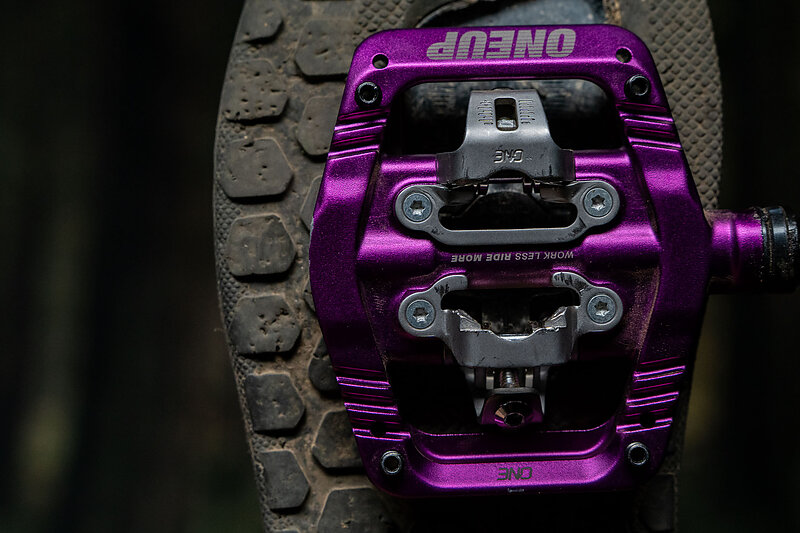
For Now
In my review of OneUp’s new V2 handlebars I mentioned how the brand has long been my first stop when it comes to making a bike “mine.” I think these pedals are a natural extension of that positioning.
Shimano makes really good SPD pedals. They’re the gold standard for a reason, and OneUp’s Clip pedal isn’t necessarily out to turn that paradigm on its head. Instead, they offer an alternative. Looking for a slightly larger platform with a barely thinner mechanism, that can lock down tighter, and is available in a bunch of colors? This is the pedal for you.
Learn more: OneUp
